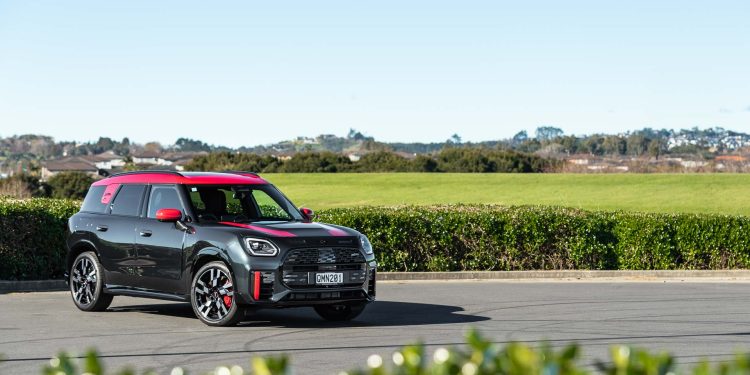2024 Mini Countryman JCW All4 Flavoured review
Words: Peter Louisson | Photos: Isaac Western
Countryman Core is all about town and around duties while JCW is for the driving enthusiasts. Does it all come at a cost?
So it was a case of out of the Mini Countryman Core and into the JCW Countryman All4. Now this is what I’m talking about, although there’s a price to pay, both in fuel use and for the performance hike and move to AWD.
While the initial outlay ranges between $76k and $83k, depending on the spec level of the JCW you’re considering, we’d say it’s probably worth it for the overall improvement wrought by the additional zing and dynamics, not to mention a snazzier (read sportier) interior ambience over the base Countryman.
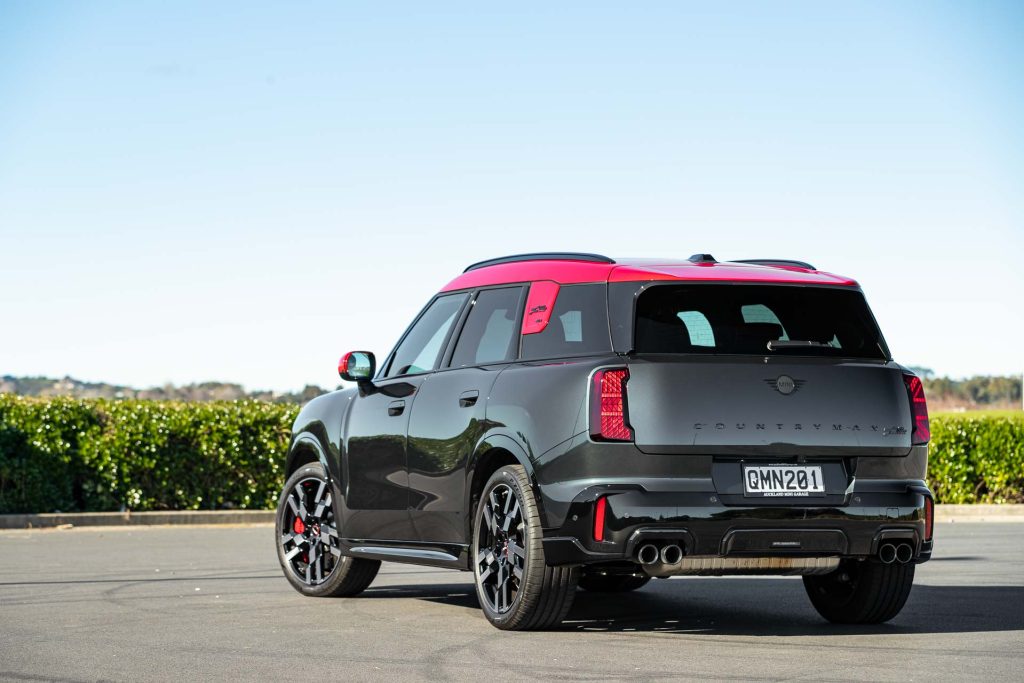
There are nice little features too, as you’d hope, like the Mini puddle lamps, seat electrics and the like.
But it’s the added performance that is most noticeable and relevant here. The 1.5T, even with the mild hybrid set-up, isn’t exactly overwhelming in the Countryman Core, and that’s most apparent with hesitation off the mark.
Here though, the 2.0T is noticeably stroppier. This doesn’t rely on electric motor assistance either. Oddly enough, even without this, it doesn’t seem to use a whole lot more gas.
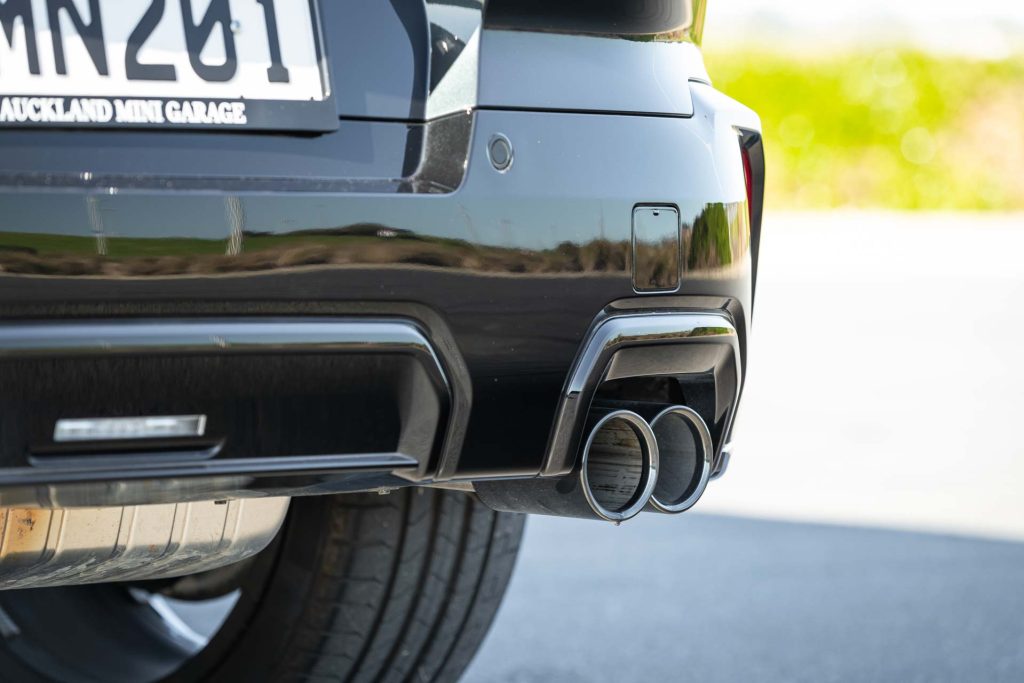
Figure on sevens in the Core and eights or nines in the JCW. Our highest was around 9.5L/100km. Fuel use figures from the trip computer suggested an overall figure of 8.6L/100km during its lifetime.
Handy that the tank size is slightly larger at 53L than in the mild hybrid.
That modest increase in fuel use is evident despite it having quite a bit more urge from its 2.0T engine that produces 221kW and 400Nm of torque.
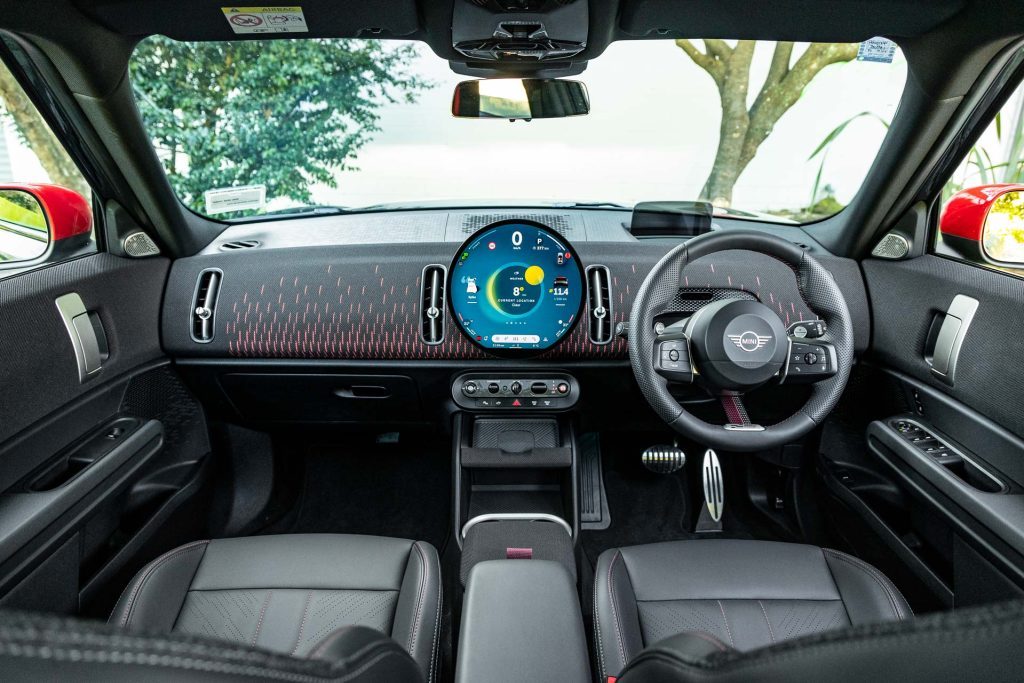
It fires through a twin-clutch gearbox too, but here the output is distributed to all four wheels via a variable torque system compared with via the fronts in the Countryman Core Classic we drove previously.
There’s also adaptive damping and with the Favoured trim there’s an uprated brake system with four-piston brake calipers. These resulted in a best emergency stop from 100km/h of 34.76m.
They feel reassuringly strong under foot too.
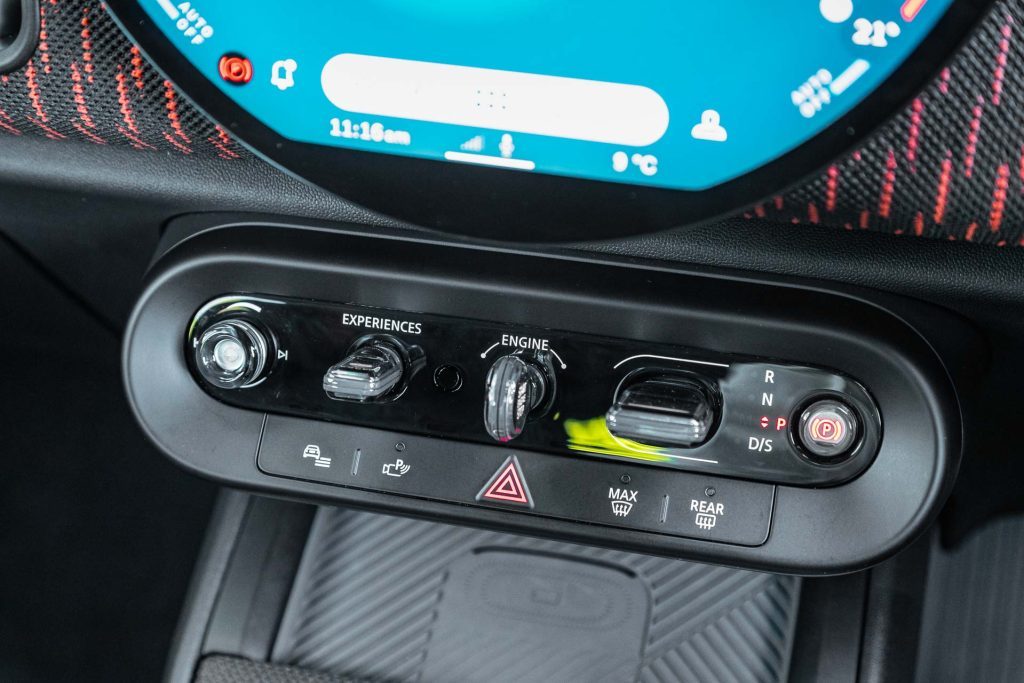
Quicker than Core
And on that, it’s a bunch faster than the front-drive Countryman, as you’d expect from the significant power up.
However, at times it feels like it is predominantly driving with the front wheels, which is sometimes disconcerting.
For example, when flooring it for an overtaking manoeuvre, there’s quite evident torque steer as all the power initially flows north.
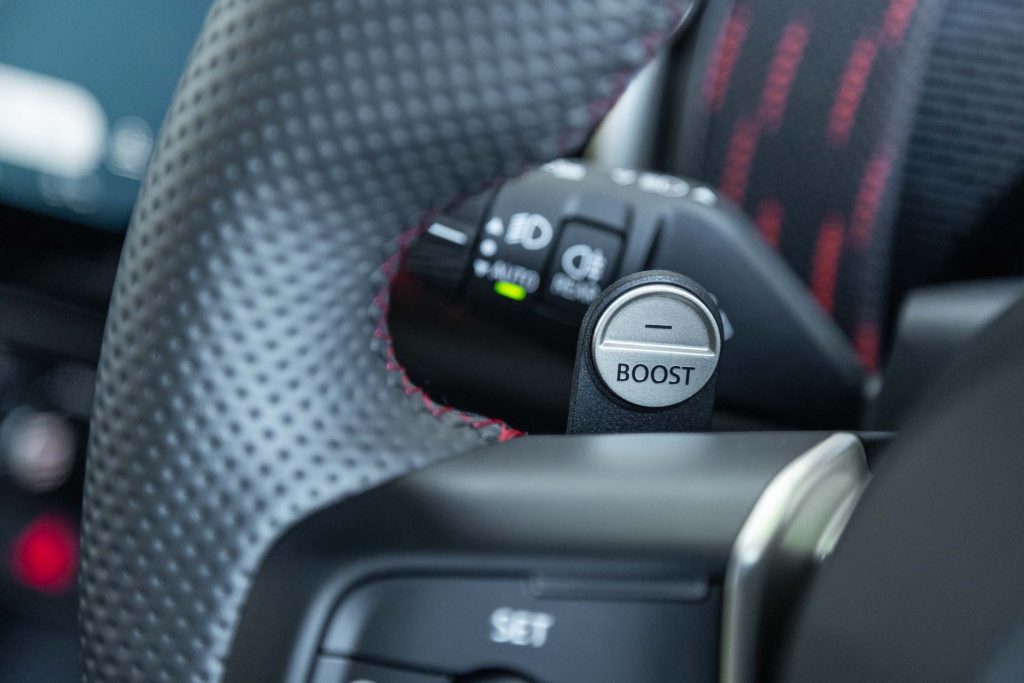
The tugging at the wheel isn’t subtle either. Sure there’s a lot more power needing to be deployed as mentioned but you’ve also paid the extra for AWD traction.
We couldn’t quite match the Mini claim of 5.4sec for the 0-100 discipline (5.69sec). That said, we didn’t know about the temporary boost button either (it deploys when you pull and hold the left paddle), at least until after performance testing.
That hikes torque a little further for 10sec so maybe had we discovered this in time it might have met its mark. It’s pretty quick on the overtake, requiring only 3.5sec to accumulate 40km/h of speed, from 80-120.
Again, possibly even quicker with the booster paddle. Sport mode we found a touch frantic, whereas Core mode seemed about right, in the Goldilocks zone.
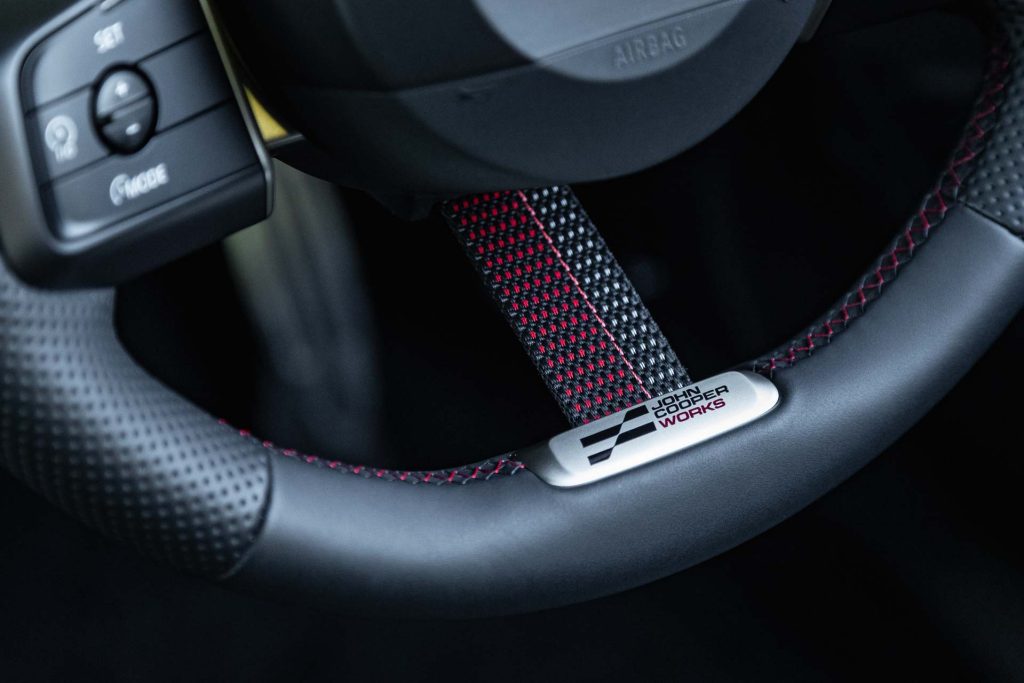
The green mode to conserve fuel didn’t quite do it for me, and it didn’t last long there. Core cooks then.
And while on performance, those big brakes with their four-piston brake calipers up front certainly do bite hard, as you’d want them to with the added go power.
While the actual distance to reach stopped might not seem amazing, the cooler conditions of winter never conspire to produce the best stopping distances. But they’re certainly effective.
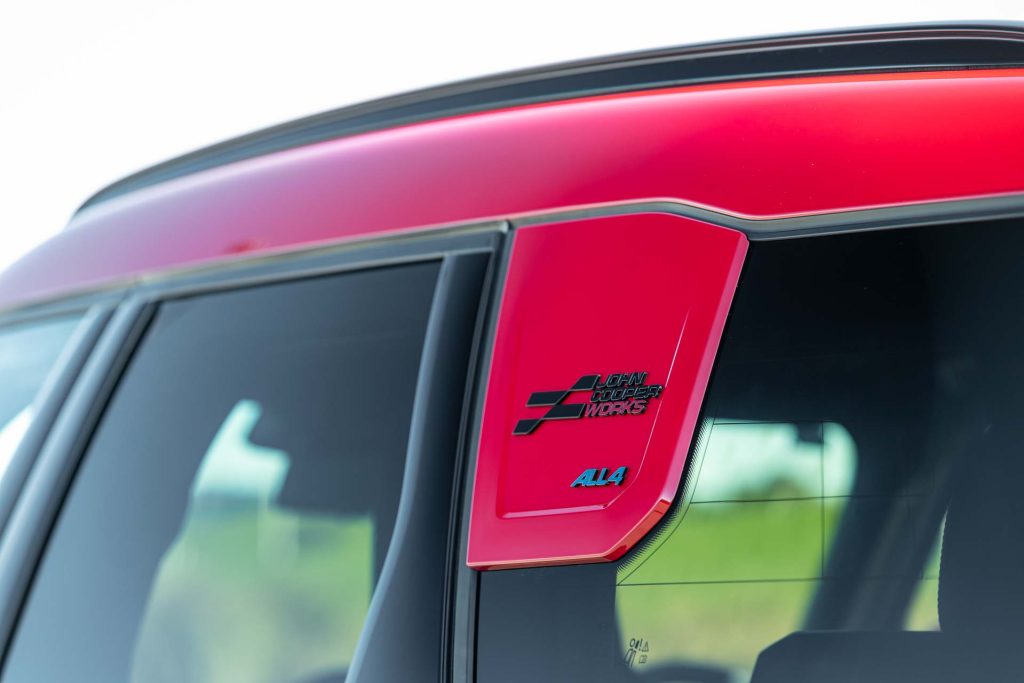
Much better between the straights?
Do the dynamics improve much over the front-wheel drive variant? Yes, for sure, although it isn’t quite as dramatic as you might imagine.
A case of more grip but the weight balance is still front biased so that does result in some eventual understeer near the grip limits.
However, ‘eventual’ is the key word because it stays locked on line for longer than the front driver. And the adaptive dampers help keep roll to a minimum as well. It all helps, obviously.
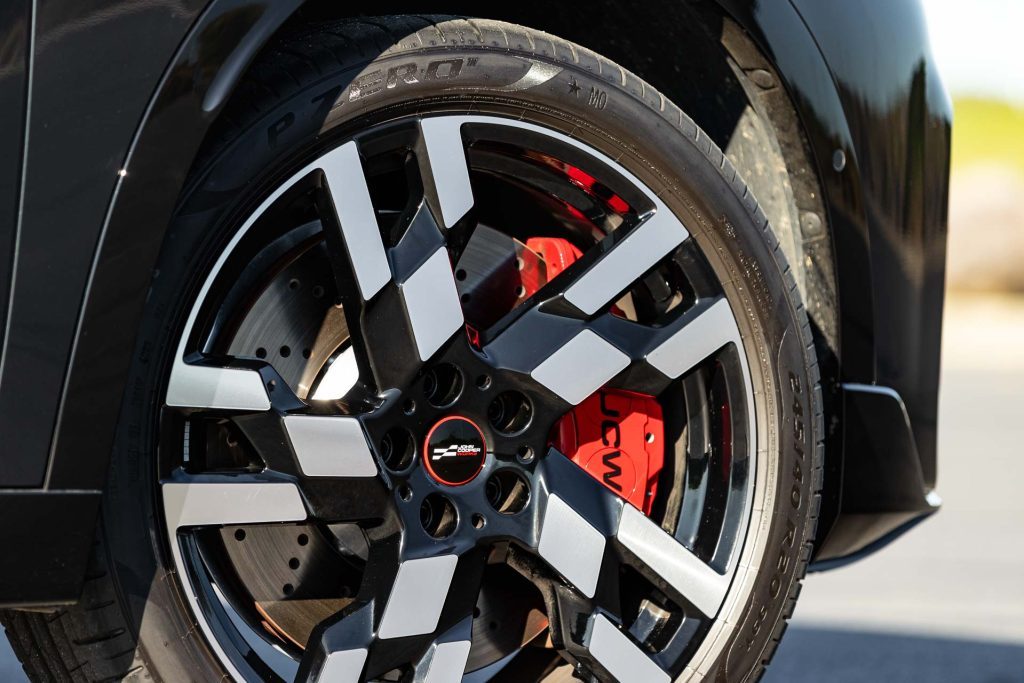
We took this on the same drive route as the BMW i4 eDrive35 and initially it seemed almost as quick through the same turns, as you might expect of something with AWD versus rear-wheel drive.
But ultimately the BMW’s superb balance shone through. Where that rounded up our sighted reference corners in blazing style, the JCW couldn’t hold as much corner speed, squealed its protest more and ended up running wide.
That’s eventually countered by independent brake nipping. But that’s comparing it with something that is ridiculously talented thanks to a sheer lack of weight over the front end, and is $20k more expensive.
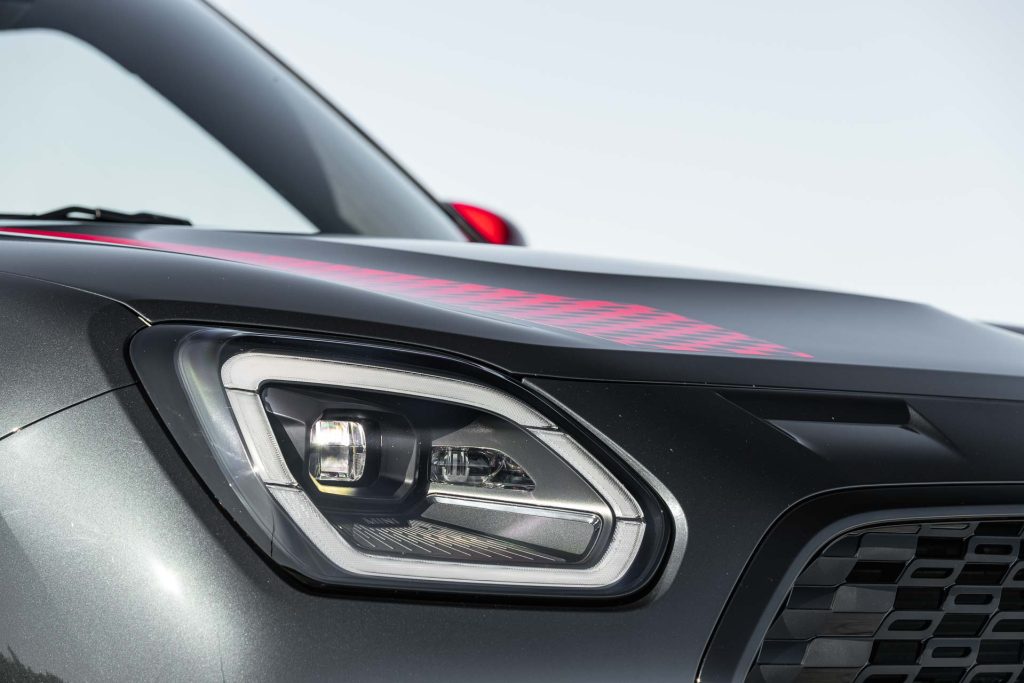
This has an ICE power lump under the hood, but rather a nice one for all that.
Interestingly, where you can extract the floor in the luggage bay to reveal the hybrid battery pack in the Core version of the Countryman, you can’t in the All4 because there is no hybrid battery.
So it has much greater underfloor storage capacity as a result.
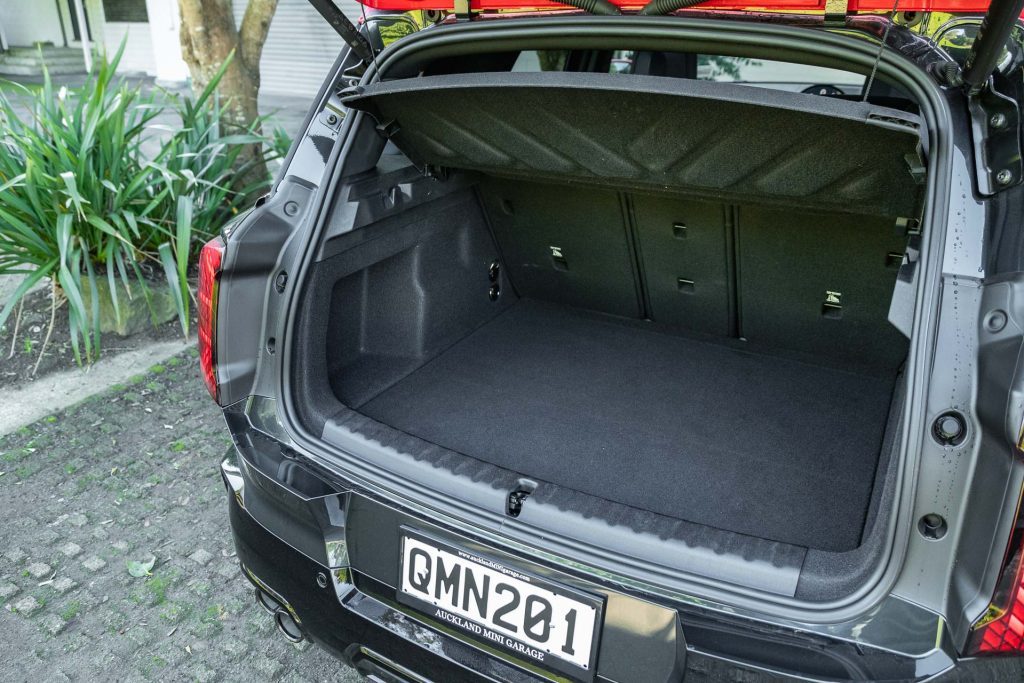
What else then?
This really does look the part, with its dark paint and red highlights on the mirror caps, front bumper and roof. You’ll be seen for sure.
We found the ride at around 100km/h really quite decent, though it is clearly a touch firmer at town speeds but it’s not jiggly like some can be, with a degree of underlying compliance.
But you buy it knowing this wild child is in its element in the backblocks. Only it’s not quite as wild as the front-drive JCWs of yore. They could sometimes be a bit much of a good thing.
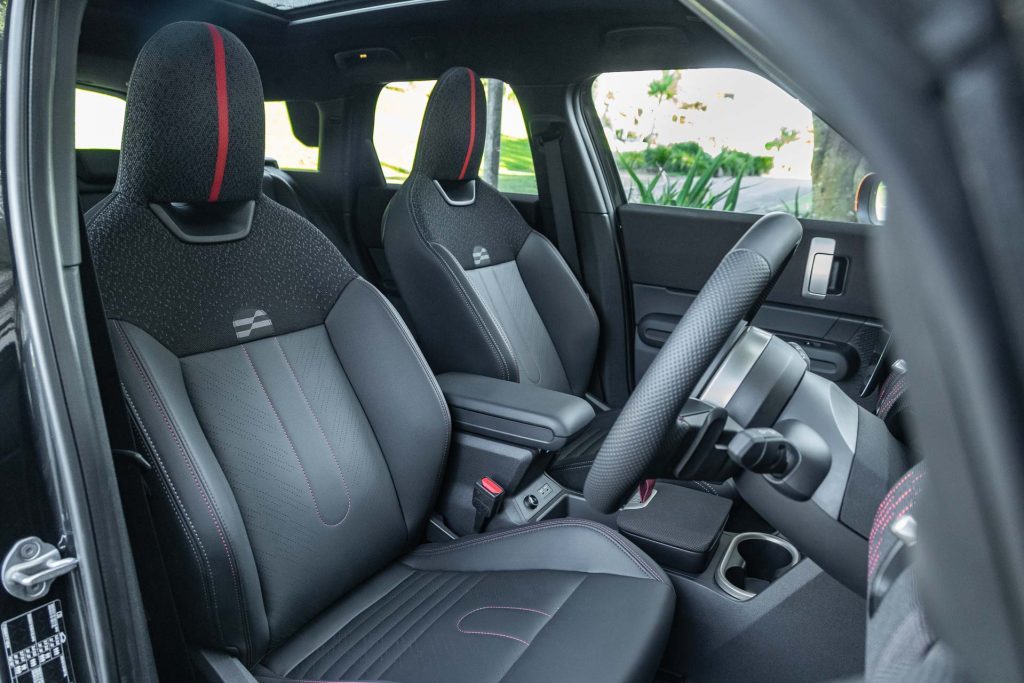
The steering in this is fun too, well weighted and quite quick.
It has a pretty decent level of kit, as you’d hope for the price, with heated seats and steering wheel, one of the clearest pop-up perspex HUDs I’ve seen, and powered seats with adjustable lumbar support.
The sound generator makes progress in Sport mode a bit more interesting. It also masks some wind noise off the A pillars.
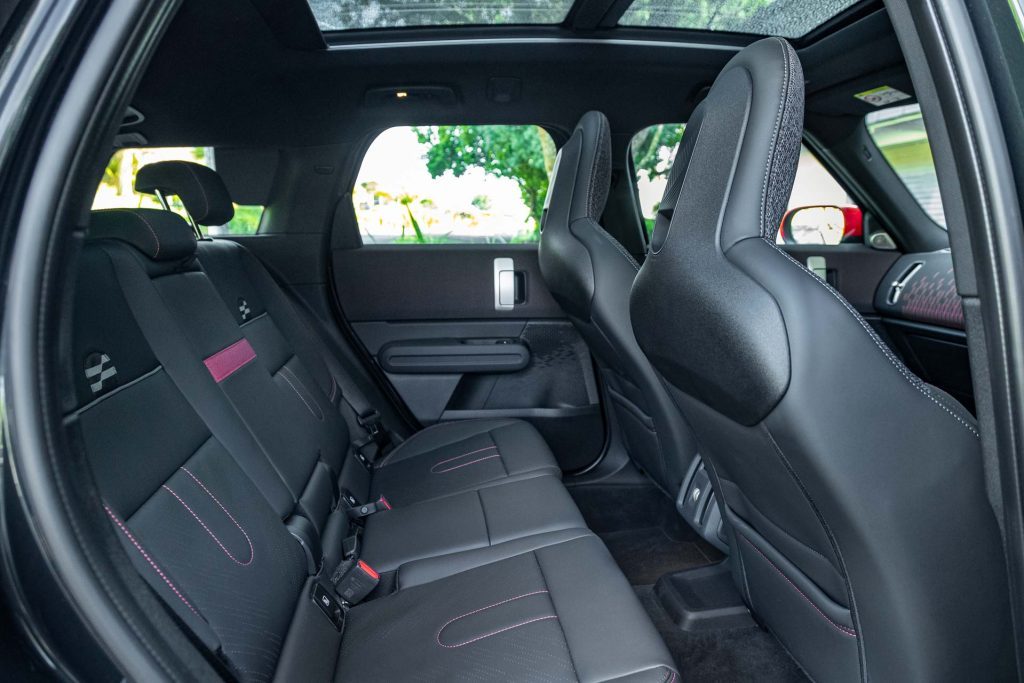
There are only four modes here, much saner than all the Experience nonsense in the hybrid Core Classic we drove earlier.
So go a little wild yourself if you’ve the readies. It’s just that in this price space there’s plenty of competition from not just ICE (like Cupra Formentor VZ models in runout for $70k) but also e-Power, like the Countryman SE All4 at $81k.
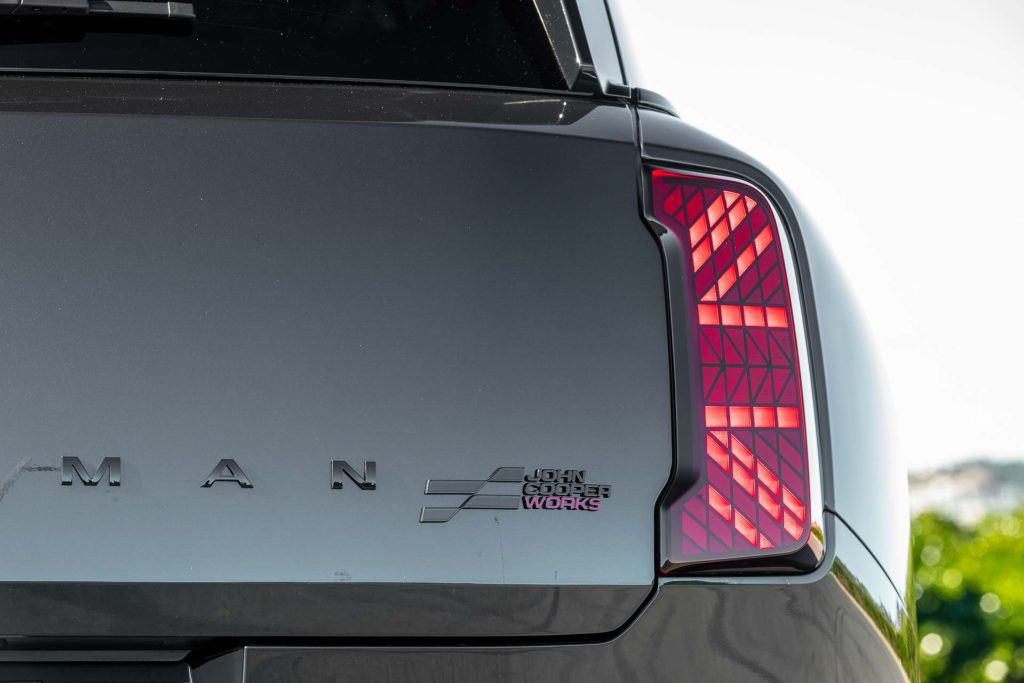
It has dual motors, more power and torque, and is equally as quick so offers something similar but a bit new-energy different from the ICE JCW.
Nice to have the option, don’t you think?
| Model | Mini Countryman JCW All4 Flavoured |
| Price | $83,990 |
| Engine | 1998cc / IL4 / T / DI |
| Power | 223kW@5750-6500rpm |
| Torque | 400Nm@2000-4500rpm |
| Drivetrain | 7-speed twin-clutch / AWD |
| Fuel Use | 8.3L/100km |
| C02 Output | 191g/km |
| 0-100km/h | 5.69sec |
| 80-120km/h | 3.49sec (98.32m) |
| 100-0km/h | 34.76m |
| Stability systems | ABS, ESP, TV |
| Safety | AEB, ACC, BSM, LDW, RCTA, ALK, AHB |
| Luggage Capacity | 505-1530L |
| Tow rating | Not rated to tow |
| Fuel Capacity | 54L |
| Service intervals | Condition based |
| Warranty | 5 years/100,000km |
| ANCAP rating | Not rated |
| Weight | 1660kg (claimed) |
This article first appeared in the October 2024 issue of NZ Autocar Magazine.


